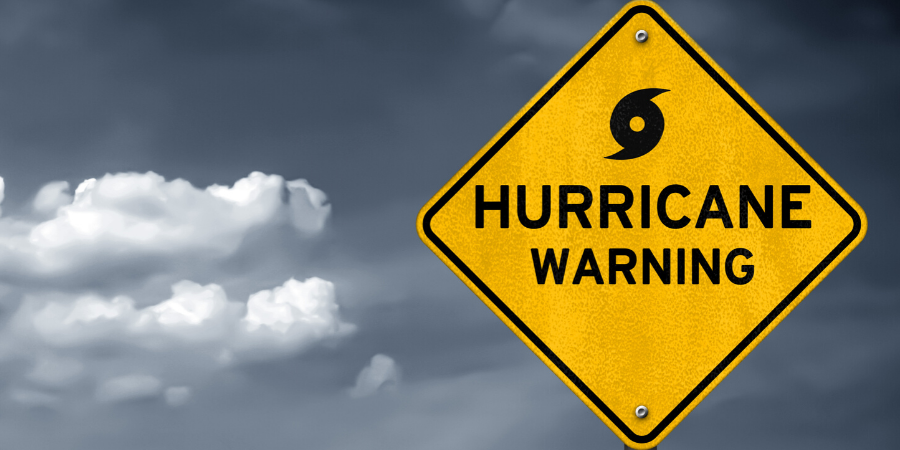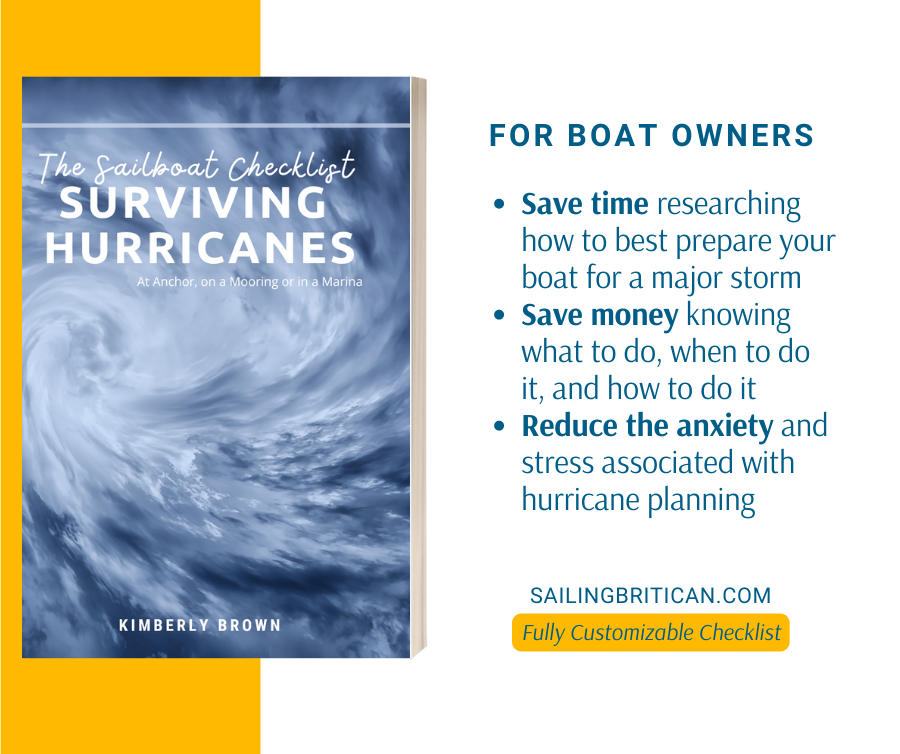When it comes to hurricane preparation the best thing to do is to find a place for you and your boat that gets the least amount, or no, hurricanes.
Hurricane Irma, the one that decimated the Caribbean, was the third storm that our sailboat survived while living in South Carolina.

After spending the hurricane season as liveaboards in Charleston we decided another season on the southeast coast of America was not tenable. We couldn’t handle the stress of dealing with hurricanes so we changed our location the following year to Trinidad, just north of Venezuela. Trinidad hasn’t seen a hurricane since the 1930s.
And after our Trinidad hurricane preparation plans went well we decided to go a bit more north to Grenada. The country of Grenada is slightly riskier but only just. Grenada has had a few hurricanes in the last 100 years with only a couple doing serious damage. Check out our article and video, 10 Reasons To Spend Hurricane Season In Grenada.
The hurricane preparation and experience we endured in Charleston were difficult. I couldn’t go through the fear and anxiety of potentially losing our home for another season. And it wasn’t just the fear of losing our home that was the issue…
During the hurricane preparation stage, a liveaboard has several days to contemplate options.
With a boat you can move it – but should you move it south or north (east or west)? What if you move your boat to a worse position? What if the hurricane changes course (as many of them do)?
And if you don’t move the boat there are at least two days of hard labor and hurricane preparations to prepare the boat to survive a storm. The sails have to come off, valuable possessions need to be packed, every vent and opening needs to be sealed closed and on the hurricane preparation, tasks go.
Unbeknownst to many people, many marinas along the east coast of America have hurricane evacuation policies.
The evacuation policy isn’t for people – it’s for the boats (and the people)! That means that some marinas might have a clause that states something like if a Cat 2 or higher hurricane is projected to hit you must move your boat out of the marina. Many marinas, like the one we stayed at – the Charleston Harbor Marina, were not created to withstand hurricane-force winds or tidal surges.
By the time the marina knows it’s going to be a Cat 2 (for example) there’s usually not much time left. Perhaps a few days at most. So – even if you deliberate back and forth on whether you move out of the marina or not, in the end, it might be forced upon you.
When marinas evacuate their tenants, the boat owners usually have no other hurricane preparation choice but to anchor somewhere outside the marina or up a nearby river.
They then have to figure out how to get to shore and discover if it’s possible to leave the dinghy onshore.
Also, it’s not just the boat you have to consider.
What do you do with the dinghy? During Irma, we had to leave our dinghy tied to the back of the boat (long story about why we couldn’t secure the dinghy), but when our neighbors returned to our boats (before we got there) they found our dinghy blown into the woods. Thankfully, it didn’t have a scratch on it but it was the end for our old outboard. Our sailboat also dragged to the side of the river, but we were incredibly lucky that no damage was done.
With all these hurricane preparation things to manage it can be easy to forget about personal safety.
During Hurricane Matthew in Charleston, we left our hurricane preparation relatively late. Simon and I even deliberated about staying on the boat while anchoring up the river. My brother called me and said, ’Nothing is more important than you and the family. Stop farting around. Get the boat sorted, get in the car, and get out of there.’ I think I was in a bit of shock but after hearing my brother I snapped out of it and realized that he was right. I had to do the best I could for our boat, and our home, and then make sure my family and I were safe.
Hurricanes suck.
In the past, they seemed more predictable. And bad hurricanes didn’t hit too often. But for some reason, they seem to be getting bigger and hitting areas that have been relatively quiet for many years.
When buying a boat it’s not just about choosing the right boat. It’s also about choosing the right location for the boat, especially during hurricane season.
We know how terrible it is to deal with hurricanes. For those that haven’t purchased a boat yet, this is one of the crappy sides to owning a boat. Perhaps if the boat is new and you have insurance (that will pay out) it’s not the end of the world…but let me say that the longer you own your boat the more you fall in love with her; the more she becomes a part of the family and the more your heart breaks when you know she’s in danger.
Simon and I have been reporting our highs and lows for over six years now. For the most part, we do live the dream. We love sailing, the lifestyle, the community, and our sailboat. It is a dream that’s totally worth pursuing…but there are problem areas and hurricanes are one of those areas.
Okay – you got the hurricane preparation message.
If your boat is in a hurricane-prone area don’t wait to start planning. Well before hurricanes hit you need a plan. It’s also good to have a checklist of everything that needs to happen to prepare your boat. Get a copy of our Hurricane Checklist Guide. It includes the checklists that we used to keep our boat as safe as possible through several storms.

Other Articles About Hurricane Season
To get a general overview of hurricane season, read: All About Hurricane Season – What’s the scoop? Otherwise, here are some other articles and videos about how we’ve prepared for hurricane season.
- 10 Reasons To Spend Hurricane Season In Grenada
- Hurricane Season On A Boat – How To Survive It!
- How We Prepared Our Boat For a Massive Hurricane
- Tropical Storm Preparation – Staying In A Marina
- Dealing With Hurricane Season
- Sailboat Hurricane Plan – Anchoring up a river!
- Sailing From A Tropical Storm